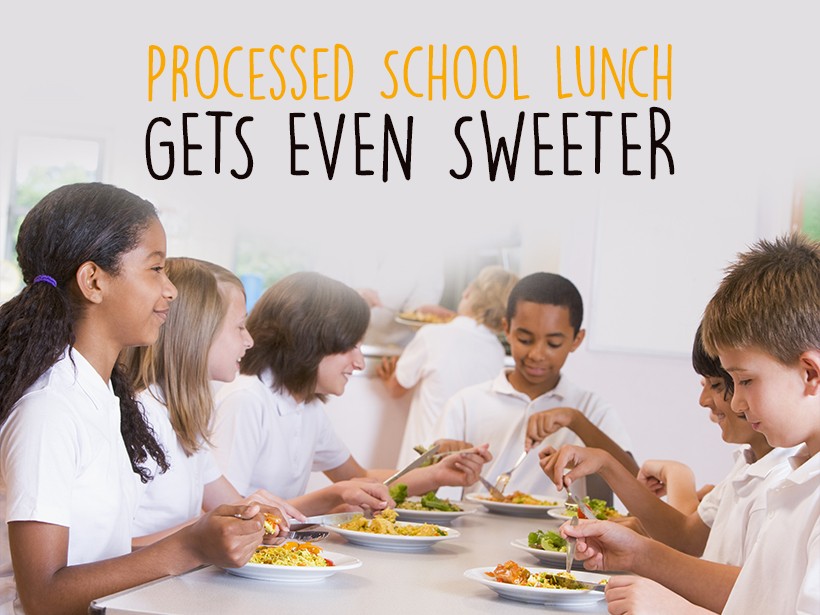This year marks the latest change in the age-old battle over school lunch, with the present administration walking back the minor changes made by its predecessor. In January, Sonny Perdue, head of the Department of Agriculture (which sets the guidelines for school lunch), lifted the regulations that were a totem of Michelle Obama’s efforts to combat childhood obesity in the U.S. “It doesn’t do any good to serve nutritious meals if they wind up in the trash can,” said Perdue, apparently in reference to children’s distaste for the First Lady’s dietary plan.1
An Unhealthy History of School Lunch
Despite small advances and setbacks like these, however, the recent history of school lunch plans has always left much to be desired. The most glaring fault, throughout the development of this program, is the lack of regulation on sugar. The 2010 Healthy Hunger-Free Kids Act allocated almost 5 billion dollars of federal assistance, set new minimum requirements on fruit and vegetables, and capped fat and sodium content.2
While the act helped to provide subsidized lunches and breakfasts to children around the country, these meals often still contained more than a day’s worth of added sugar. Much of the food paid for by the Department of Agriculture was and still is sent to food management giants like Aramark, Sodexo, and Chartwells for processing. Fresh meats, fruits, vegetables, and other healthy ingredients end up in premade pizzas, fries, and other unhealthy processed foods high in sugar. Federal regulations have done little to prevent this from happening, and studies have shown that privately managed school cafeterias serve lunches low in nutrients and high in sugar.3
From Bad to Worse
While the previous Obama-era regulations left much to be desired, they did make some useful improvements. One of these was to get rid of the highly popular flavored milk, such as chocolate and strawberry. The new changes under the Trump administration will do away with this among many other restrictions, and children will once again be met with the sugary substitutes in place of regular milk.4 This year’s changes will also reverse sodium limits and minimum standards for fruit, vegetables, and whole grains in school lunches.
Perdue’s cuts to the federal program are certainly a step in the wrong direction, but the regulations that preceded them were by no means perfect. Federally subsidized school breakfasts, for example, could, according to the old rules, contain over 50 grams of sugar and consist of juice, dried or canned fruit, and prepackaged waffles, pancakes, or the like.5
While the rules governing fat, sodium, and the quality of ingredients have shifted over time, there has never been a cap on sugar portions. Some suggest that this is a result of the until-recently absent daily recommended amount determined by the FDA. Changes to the Nutrition Facts labels on products however, set to take effect this summer, should fix that problem. As for our sugary, processed school lunches, we may have to wait some time for a serious solution.
NUTRITIONAL DISCLAIMER
The content on this website should not be taken as medical advice and you should ALWAYS consult with your doctor before starting any diet or exercise program. We provide nutritional data for our recipes as a courtesy to our readers. We use Total Keto Diet app software to calculate the nutrition and we remove fiber and sugar alcohols, like erythritol, from the total carbohydrate count to get to the net carb count, as they do not affect your blood glucose levels. You should independently calculate nutritional information on your own and not rely on our data. The website or content herein is not intended to cure, prevent, diagnose or treat any disease. This website shall not be liable for adverse reactions or any other outcome resulting from the use of recipes or recommendations on the Website or actions you take as a result. Any action you take is strictly at your own risk.
- For Keto, the Everyday Research Says it All - March 6, 2019
- Huge Harvard Study Backs Up the Wide-Ranging Benefits of a Low-Carb Diet - February 25, 2019
- Experts Convene for Keto Conference - July 30, 2018




